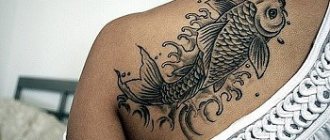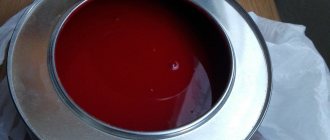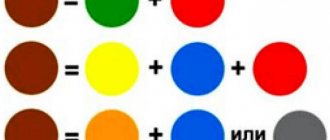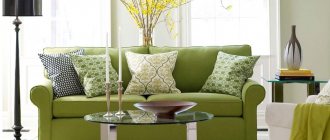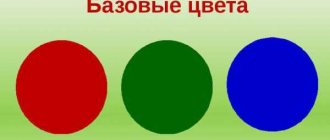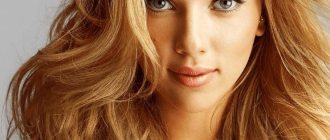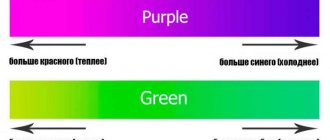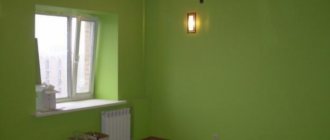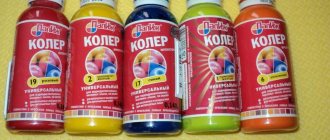Portraits or paintings of people have been rooted in art since ancient times, even when cave walls served as canvas. And of course, artists of all eras faced the question of how to get the perfect flesh color when mixing paints. Fortunately, nowadays the palette of oil and acrylic paints, gouache and watercolors has all the necessary colors to obtain any shade of skin color. You just need to understand a little about the features and composition of flesh color.
Pencils
Flesh-colored pencils are only available in professional artists' sets. In regular kits it is most often absent. But the problem is completely solvable. To make skin color with pencils, you will need to combine pink, white and orange. Very little of the last color is added.
But this method is only suitable for drawing light-skinned people. After all, you will have to draw with strokes. Therefore, blue should not be used. Red is used to a minimum if necessary. It is replaced by orange. After all, red and yellow are already mixed in it.
The strokes must be layered on top of each other, moving from light to dark. To achieve naturalness, the pressure should be gradually reduced. To give a slight dark tint, you can add more yellow. If you need to darken it, make light strokes with a red pencil.
How can you get black color from plasticine?
You can also mix complementary colors together, such as blue and orange, red and green, or yellow and purple. In addition, rich black color can be obtained from a combination of blue and brown paints.
Interesting materials:
In what cemetery is the block buried? What ship was Striped Voyage filmed on? What continent do fur seals live on? On what continent do crocodiles live? Where is the South Korean Economy? Where does Antarctica rank in terms of area? On which metro is the Aviapark shopping center located? On what island was Sklifosovsky born? What lake was the ice filmed on? On which finger do men wear rings?
Oil paints, watercolors or gouache
In this case, slightly different tones are used. It is possible to make a flesh color with watercolor or gouache by combining red and yellow, to which a little blue is added. Mixing ratio for European leather is 48:48:18.
Next, the resulting paint, similar to brown, is lightened with white. Naturally, you need to knead it not on a sheet of paper, but on a palette. Before each dip into new paint, the brush should be rinsed.
You can also get skin color from watercolors and gouache by mixing pink, white and orange. We described this method in the previous subsection.
There is a third way. If in the case of oil paints the use of white when drawing people is a prerequisite, then in the case of watercolors you can use only three tones: red, yellow and a small amount of blue. They are simply diluted a little thinner with water. White will be replaced by paper, which will show through the color. In this case, the skin will turn out even more natural.
When working with oil paints, ocher (there should be a little more of it), yellow and red cadmium is mixed to obtain a flesh-colored paint. When applying shadows, brown-orange sienna or umber is added to them. But white is also always taken as a basis.
Paint overlay
Human skin is one of the smoothest and softest materials depicted in painting. To achieve realism, it is necessary to pay special attention to the smoothness of the portrait part of the drawing and soft color transitions. There are several principles to achieve the “glow effect” that gives the skin a realistic glow:
- Mixing colors only on the palette. The expression of oil is expressed in voluminous, visually distinguishable strokes, moving from one tone to another. But in realistic portraits, this technique is destructive: it ages the face and adds unnecessary details to it. Check the colors on the palette to avoid color mixing and multiple layers on the canvas. The fewer corrections, the less the tone deviates from what was intended.
- Use of solvent. A small amount of solvent can help bridge the gap between color levels. This will create an even, smooth transition similar to the real curves of the skin. Use the corner of a single brush to scoop up a small amount of solvent, then use gentle strokes to sand the border between the colors. If you're using multiple layers, be sure to create more transparency from each layer before adding the next: this creates a life-like effect, giving the portrait a realistic shine and natural complexity.
The strength of the oil is the ability to accurately reproduce any shade. Use this feature to recreate not only the base skin tone of the model, but also the shade on the folds of the palms (it is repeated on the temples and near the eyelids), on the neck (if the neck is in the shadow, it is repeated on other shadow areas). It is tonal relationships and texture that add realism to oil portraits. Pay attention to detail and you will realize that beautiful, recognizable oil portraiture is within the reach of every hardworking artist.
oil paints oil paints
Flesh tones
There is simply no ready-made recipe for drawing the skin of a specific person. After all, the shade of a dark-skinned southerner will be different from the skin of a European. The brightness of the tan also matters. Women's complexions are always lighter. The torso, arms and legs of any person have a darker shade.
Artists divide human skin into 4 color types. The lightest, characteristic of fair-skinned people, is winter. He belongs to the cold ones. This skin has a milky beige tint. The summer color type is always darker. Despite the name, it is also classified as cold. Warm spring is brighter than the same warm autumn, typical for southerners. In each case, to get a flesh color, you will need to mix colors in different proportions.
Certain parts of the body that receive less light require darkening. Reflections from clothing or surrounding objects may also fall on the face and body. For example, if there is a red hat on the head, a warm reddish tint will appear on the face. This kind of reflection effect in art is called a reflex.
When depicting people, all these factors must be taken into account. It will be easier to select skin colors if you use a special table of their ratios. It clearly shows not only the existing types of skin tones, but also the mixing proportions, which is very convenient.
Colorful temperature
Before we go any further, we need to understand lukewarmness. The words “warm” and “cool” in relation to shades do not describe specific colors, but the relationships between them. Each hue on the color wheel can be warm or cool depending on the context.
This whole idea is based on the assertion that one part of the color wheel is warm colors: red, yellow, orange, in a word, those that, when you look at them, seem like a hot flame (ouch). The other part is blue, purple, etc. – cold, stereotypically represented by the colors of ice, snow, water and everything cold. The remaining shades are considered to be “transitional” from warm to cold and back.
To some extent, these definitions are true, red often feels warmer than blue, but this approach misses the nuances. Artists most often have to deal with colors that are closer to each other on the color wheel, and then determining which one is warmer is no longer so easy.
Let's compare these two colors:
This is a basic example with bright red and blue colors. Here it is easy to determine which color is warmer and which is cooler.
Now let's look at this option:
Here the difference is not so obvious.
Now let's compare these colors:
This and similar examples show that any color can be colder, it all depends on what color we compare it with.
This approach is based on a model in which color “moves” around the color wheel depending on lighting. Let's talk about this in more detail.
Masks
A properly selected composition normalizes the functioning of the sebaceous glands, dries out the T-zone and moisturizes the cheeks. Before applying the mask, it is advisable to cleanse the pores using a herbal steam bath. To prepare it, use sage, chamomile or calendula. Treat oily areas with a scrub. After this, proceed to applying the active composition. The full course consists of 10-15 procedures performed 1-2 times a week, then take a break for 2-3 weeks.
Nutritious
These masks contain components that saturate the epidermis with vitamins, minerals, healthy fatty acids and other active compounds. Regular application of nutritional mixtures to the face evens out its color, normalizes the water-lipid barrier, and improves skin regeneration. Effective masks:
- Recipe No. 1:
- Ingredients: 2 tbsp. l. semolina, 1 tbsp. l. curdled milk, 1 tbsp. l. fresh cucumber puree (without skin), 2 tsp. aloe juice
- Mix semolina with yogurt, add cucumber puree and aloe juice, mix thoroughly.
- Distribute the composition over your face, wait 15-20 minutes, rinse with running water.
- Recipe No. 2:
- Ingredients: 100 g ripe melon, 1 tbsp. l. kefir
- Turn the melon pulp into a pulp, add kefir.
- Apply the composition to your face, rinse after 20 minutes. The mask nourishes and tightens the skin, tightens pores, and prevents dehydration of the epidermis.
- Recipe No. 3:
- Ingredients: 2 tsp. dry yeast, 2 tsp. sour cream.
- Mix the ingredients in a cup and place it in a container of hot water. As soon as fermentation begins, the mask is ready.
- Clean the epidermis, lubricate it with a light cream.
- Apply the mask and wash off after a quarter of an hour.
Cleansing
The principle of action of these masks is to soften the skin and expand pores. Active components penetrate deep into the dermis and draw out toxins from it. As a result, the face acquires an even, healthy color, becomes elastic and smooth. Effective masks:
- Recipe No. 1:
- Ingredients: 3 tsp. white clay, juice from one slice of lemon.
- Combine the ingredients: you should get a thick paste.
- Apply the mixture to the T-zone.
- Wash off the mask when it is completely dry and crusty.
- Recipe No. 2:
- Ingredients: 1 tbsp. l. oatmeal, milk or chamomile infusion (by eye).
- Grind your oats into flour using a coffee grinder. Add enough milk or chamomile decoction to make a paste the consistency of sour cream.
- Apply the mask to your face and wash off after a quarter of an hour.
- Recipe No. 3:
- Ingredients: 1 egg white, 2 tbsp. l. semolina porridge without sugar and salt, 1 tsp. lemon juice.
- Beat the whites into a fluffy foam, add lemon juice to it. Enter warm semolina.
- Apply the mask to oily areas of the skin, keep for no longer than 10 minutes. The composition effectively removes blackheads, eliminates pimples and blackheads.
Restorative
Such masks promote cell regeneration and hydration. Regular use of restorative mixtures makes the skin young, eliminates wrinkles, unevenness, hides vascular networks, and eliminates swelling. Effective and simple masks:
- Recipe No. 1:
- Ingredients: 50 g pumpkin pulp without peel, 1 tbsp. l. potato starch, 2 tsp. olive oil.
- Boil the pumpkin until soft, turn into puree. Add starch, olive oil, mix thoroughly.
- Apply to face for a third of an hour, rinse with warm water.
- Recipe No. 2 (for those with very dry cheeks):
- Ingredients: 2 tbsp. l. flaxseed, water (by eye).
- Grind the seeds in a coffee grinder, pour the resulting flour with water. Boil over low heat until a sticky paste forms.
- Cool the mixture to body temperature, spread over the cheeks and cheekbones, and leave for 15 minutes. Rinse off with warm water.
- Recipe No. 3:
- Ingredients: 2 tbsp. l. wet cottage cheese, 2 tbsp. l. olive oil, 2 tbsp. l. almond oil, 1 tsp. milk, 1 tsp. carrot juice.
- Mix all ingredients in a blender or mash the cottage cheese well with a fork until smooth, and then add the remaining ingredients.
- Distribute the mixture over the epidermis, rinse after 10-15 minutes.
Lighting
How to make purple from plasticine: how to mix colors correctly
Lighting sources can be very different, this is a big topic of conversation and I have already spoken about this several times. In the article Control of color rendering in photography, I talked about the spectral composition of light.
Briefly it looks like this. If you shine some spectrum of light on the subject, this spectrum is reflected back (in a simplified case). Those. If I shine red, then red will be reflected. If it's green, green will be reflected. The same thing happens in nature; in cloudy weather our faces are green-blue, matching the color of the cloudy sky. It's not a very pretty sight when you look at pictures like this, right?
And if you shoot at sunset, the faces turn orange. Also not very natural and attractive.
In this regard, the ideal light source is a photographic flash, which produces white light of the full spectrum (we are talking about good flashes).
Examples of portraits with ideal complexion
Most classics, as well as modern portrait painters, create a beautiful and natural complexion and body in their paintings. An example of the successful use of flesh tone is the work of Bryullov, Rokotov and Levitsky. The youth and freshness of the skin are perfectly shown in the painting “Portrait of Maria Lopukhina,” which was painted by Borovikovsky. Artists of our time who create masterpieces or even reproductions can also obtain flesh color by combining basic shades with each other.
Obtaining skin color by mixing paints
To get a flesh color, you need to choose the right paints and get the right proportions. Otherwise, the finished tone will be very far from perfect.
Applying base colors
Let's work with the base skin tones. First, fill the head with any color using a hard round brush. I used blue color. Then go to Image – Adjustments – Hue / Saturation (Image – Correction – Hue / Saturation).
Adjust Hue , Saturation or Lightness to change the head color to brown. In my case, I only needed to set the Hue to -180.
Mix the layers with the base and sketch, setting the latter's blending mode to Overlay . Opacity to 33%.
Keep editing
PicsArt is a renowned all-in-one photo editor and one of the largest editing platforms with over 150 million active members. With numerous features and editing tools, PicsArt helps you add a unique touch to your profile.
Now that you know how to edit skin color or use a few editing filters, it's time to start using them. Instead of looking at other influencers' posts, try rearranging your images using presets and creating new ones. In the end, you may be pleasantly surprised by the results.
How are you doing with photo editing? Do you have a preferred filter or do you edit your photos manually?
Let us know in the comments below!
Drawing shadows
Now let's apply the shadows. Create a new layer and use the Ctrl+Alt+G key combination to transform it into a clipping mask. Set the blending mode of this layer to Multiply (Multiplication) and begin to paint the shadows, using the same shade of brown as for the base.
Read also: Inflammation of the fingers, or panaritium
Using a soft round brush with Hardness 0%, concentrate the shadows on the neck and around the perimeter of the face.
Monitor calibration
I know many photographers and I must admit that among them there are not many people who calibrate their monitors. What is the result? A person sees on the monitor not the picture that is uploaded there from the camera, but some interpretation, often with large distortions in color. And she begins to process the picture based on what she sees on the monitor. This happens very often.
Printing house designers are more responsible in terms of monitor calibration
Not all of them, of course, but those who have been “sanded” by demanding clients calibrate their monitors regularly and their designers know that this is important. At least printing houses with calibrated monitors are common
Let's return to the egg: add light
Now let's return to our egg. Without thinking about the color characteristics for now, let’s select the illuminated and shadow sides of the egg and make the latter darker.
Having decided on the most illuminated area, we will apply the shade of our light source. In this case, it is a warm color. Let's remember about the variety of flesh tones and bring all our base colors applied to the egg closer to warm.
It's time to go to the dark side. Color in this zone undergoes great changes and is more influenced by the environment. Marco colored the background blue to further demonstrate the interaction of light, shadow and environment.
The environment acts as a collection of small light sources that have their own strength: the light bounces off the environment and falls on the shadow side. This is called a "reflex".
Reflected light in the shadow is weaker than the main light source. Therefore, it will affect the color of the object less than the main source. In this example, the blue background will pull the base colors away from the light color. Those parts of the egg that face upward are more influenced by the blue color. You don't have to make these colors literally blue/blue, just move them slightly along the "path" of the color wheel in that direction. Here you can choose from many possible shade options that are cooler than the base colors.
Those parts of the egg that are not facing upward receive less exposure to blue light. The colors in this part of the shadow will be cooler than those we used in the light, but not as cool as the colors exposed to maximum blue influence.
Be free in your choice of color! As long as the colors in the shadow move in approximately the same direction on the color wheel, the puzzle will be put together.
One of the most common clichés in painting, that warm light produces cooler shadows, is misleading. This is not an axiom. Warm light by itself does not create cold shadows. The fact is that a warm light source “moves” the base colors closer to this warmth, but does not affect the shadows, because it does not touch the shadowed parts. And that's why only the context/environment can make the shadow cooler.
Monitor calibration
I know many photographers and I must admit that among them there are not many people who calibrate their monitors. What is the result? A person sees on the monitor not the picture that is uploaded there from the camera, but some interpretation, often with large distortions in color. And she begins to process the picture based on what she sees on the monitor. This happens very often.
Printing house designers are more responsible in terms of monitor calibration
Not all of them, of course, but those who have been “sanded” by demanding clients calibrate their monitors regularly and their designers know that this is important. At least printing houses with calibrated monitors are common
Smoothing the skin
Step 1
Now the girl in the picture becomes more similar to her original photo. We continue to mix colors and create smooth transitions using a soft round brush. Eyedropper Tool ( I
)
(Pipette) select adjacent colors and carefully mix so that there are no sharp transitions between shades.
Adjust the
Opacity of the brush to get a better and smoother result.
Step 2
Some areas still have rough brush strokes, let's fix that. Create a new layer with the blending mode Hard
Light
(Hard light) and fill the skin with a solid color.
